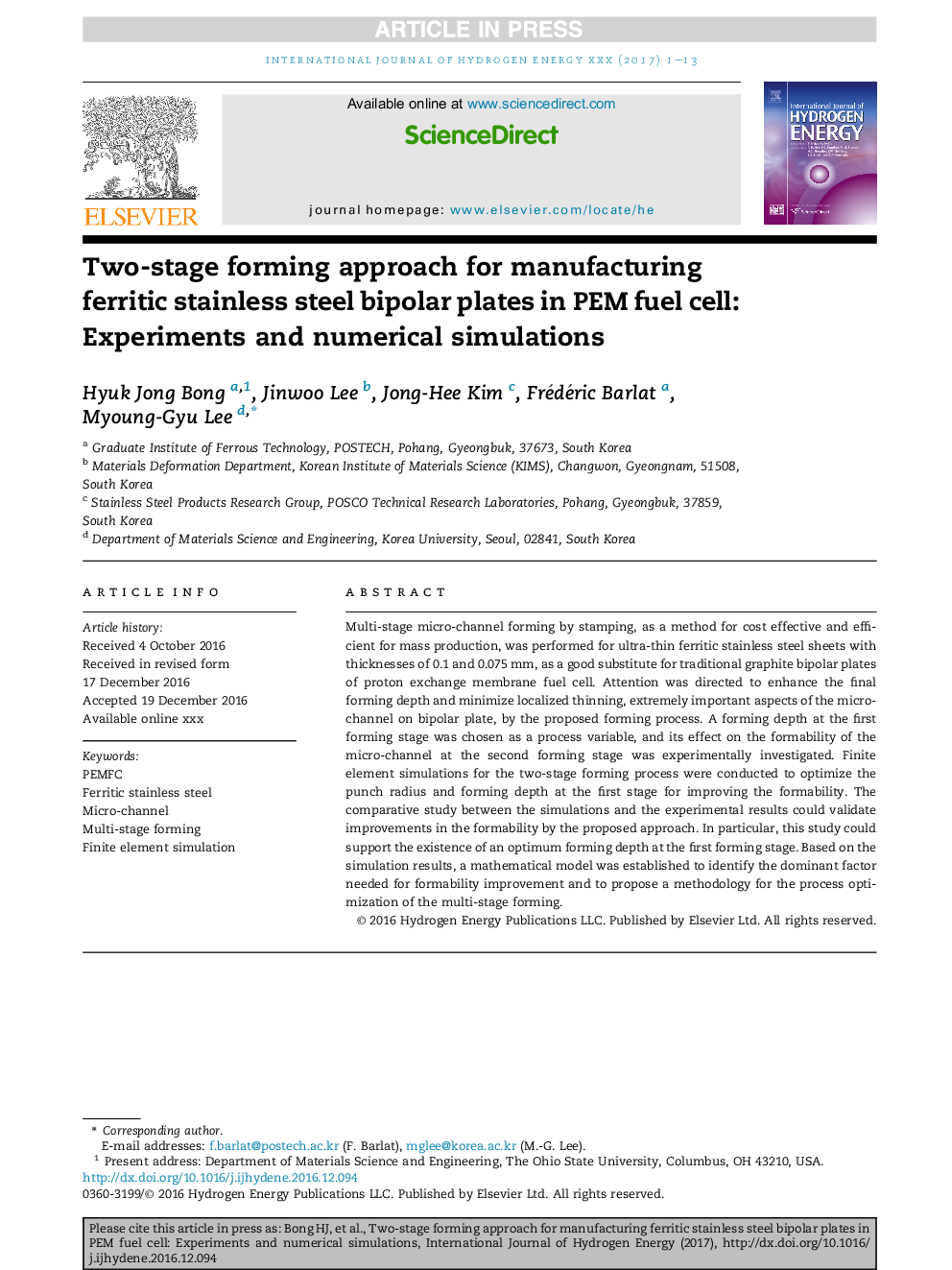| Article ID | Journal | Published Year | Pages | File Type |
|---|---|---|---|---|
| 5146135 | International Journal of Hydrogen Energy | 2017 | 13 Pages |
Abstract
Multi-stage micro-channel forming by stamping, as a method for cost effective and efficient for mass production, was performed for ultra-thin ferritic stainless steel sheets with thicknesses of 0.1 and 0.075Â mm, as a good substitute for traditional graphite bipolar plates of proton exchange membrane fuel cell. Attention was directed to enhance the final forming depth and minimize localized thinning, extremely important aspects of the micro-channel on bipolar plate, by the proposed forming process. A forming depth at the first forming stage was chosen as a process variable, and its effect on the formability of the micro-channel at the second forming stage was experimentally investigated. Finite element simulations for the two-stage forming process were conducted to optimize the punch radius and forming depth at the first stage for improving the formability. The comparative study between the simulations and the experimental results could validate improvements in the formability by the proposed approach. In particular, this study could support the existence of an optimum forming depth at the first forming stage. Based on the simulation results, a mathematical model was established to identify the dominant factor needed for formability improvement and to propose a methodology for the process optimization of the multi-stage forming.
Related Topics
Physical Sciences and Engineering
Chemistry
Electrochemistry
Authors
Hyuk Jong Bong, Jinwoo Lee, Jong-Hee Kim, Frédéric Barlat, Myoung-Gyu Lee,
